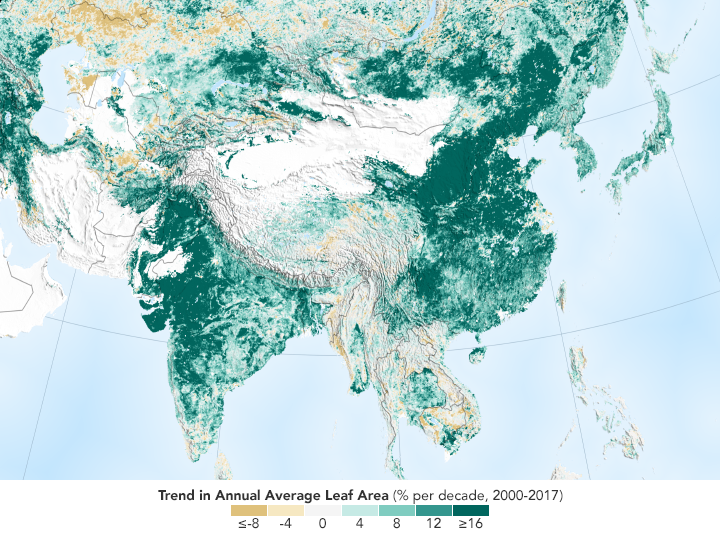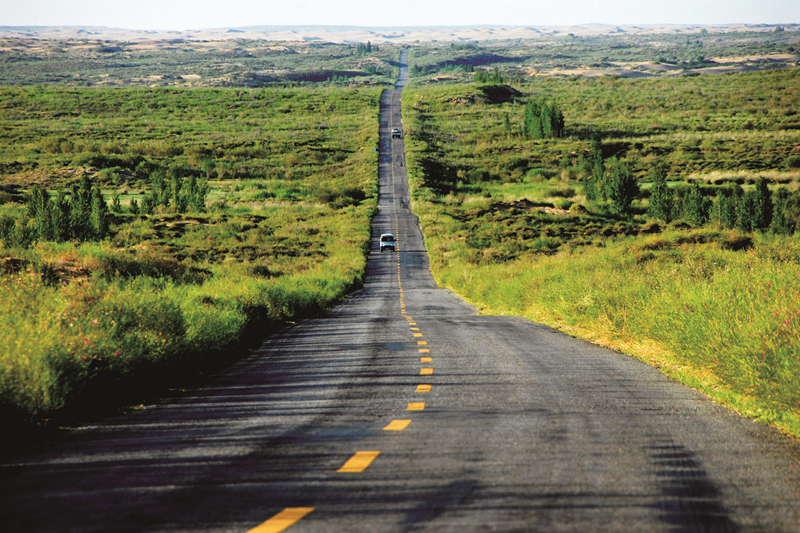China and India making Earth greener, NASA study shows


A study by NASA has revealed China and India, the world's two most populous countries, are primarily responsible for making the Earth greener over the past two decades.
The study, published on Feb 11 in the journal Natural Sustainability, has found that since 2000 the Earth's green leaf area has increased by 5 percent, or over 5 million square kilometers. That's an area equivalent to the total of the Amazon rainforests.
"China and India account for one-third of the greening, but contain only 9 percent of the planet's land area covered in vegetation – a surprising finding, considering the general notion of land degradation in populous countries from overexploitation," said Chen Chi of the Department of Earth and Environment at Boston University, lead author of the study.
The effect mainly stems from ambitious tree-planting programs in China and intensive agriculture in both countries, NASA said in a statement.
China is the source of a quarter of the planet's increase in forest area, despite having only 6.6 percent of the world's vegetated area, according to the study. Forest conservation and expansion programs account for 42 percent of the increase, and another 32 percent come from intensive agriculture of food crops, NASA said.
While raising their green leaf areas, China and India have also greatly increased their food production through "multiple cropping" practices, where a field is replanted and crops are harvested several times each year.
"Production of grains, vegetables, fruits and more have increased by about 35 to 40 percent since 2000 to feed their large populations," NASA said.
The study is based on high-resolution data gathered by a NASA sensor called Moderate Resolution Imaging Spectroradiometer (MODIS) of Earth's surface from 2000 to 2017.
Over the past decades, China has made great efforts to green the land.
In 1978, the central government launched a national-level forestation project — the Three North Shelterbelt Forest Program.
By the end of 2017, the forest coverage rate among the regions in the project reached 13.57 percent, compared to 5.05 percent 40 years ago.
In an exemplary greening project, Kubuqi Desert, seventh largest in the country, has seen one-third of its area covered by vegetation during the past three decades thanks to forestation efforts.
Nationwide, China has a forest cover of 21.6 percent, and it aims to increase the number to 23.04 percent by 2020 and 26 percent by 2050.
To achieve this ambitious goal, China has taken a series of measures, from reforesting hillsides to creating protected grassland and nature reserves.






































